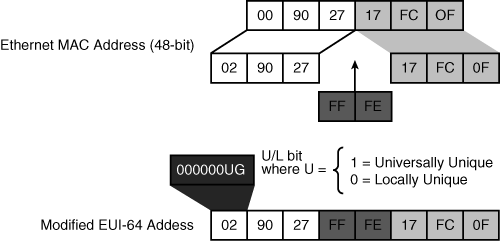
- 48 BIT MAC ADDRESS CONVERTER MANUAL
- 48 BIT MAC ADDRESS CONVERTER BLUETOOTH
- 48 BIT MAC ADDRESS CONVERTER MAC
There have been a few interesting comments on this post, I encourage you to read them if you want to learn more about this mechanism.
48 BIT MAC ADDRESS CONVERTER MAC
replace first octet with newly calculated one: 5074:f2ff:feb1:a87f The online MAC Address Lookup is used to find the real manufacturer or vendor OUI (Organizationally Unique Identifier) of your network card based on your network card MAC address.Since, one hexadecimal digit takes 4 bits, so each pair will occupy 8 bits. convert octet back to hexadecimal: 01010000 -> 50 It consists of 6 pairs where each pair has two hexadecimal digits.

Example 4-1 Router Interface MAC Address router> show interface. The router output in Example 4-1 shows the MAC address (00-10-7b-3a-92-3c) of an Ethernet interface.

It addresses serious exhaustion problem of MAC addresses.Link-local IPv6 addresses are used as part of the IPv6 network auto-configuration process. If 24 bits of a MAC are governed by an organization/vendor/manufacturer, it is called a MAC-Large (this is a traditional scheme discussed so far). The names refer instead to number of bits within a MAC that remain governed by organization as opposed to the OUI bits governed by IEEE. Created for developers by developers from team Browserling. Load an IPv6 address get a binary IPv6 address. There are no ads, popups or nonsense, just an awesome IPv6 to binary converter.

MAC-Large, MAC-Small and MAC-Medium (abbreviated MA-L, MA-S and MA-M) have the all the same size. Just load your IPv6 address and it will automatically get converted to binary bits. The 48-bit MAC address is split in half, the hex group FFFE is inserted in the middle (after the 24th bit), and the seventh most-significant bit is inverted.Įxample: The MAC address 0021.86b5.6e10 (48 bit) becomes Anyway, if you are interested about how it's calculated, it is applied to a MAC address like this:
48 BIT MAC ADDRESS CONVERTER MANUAL
9), equivalent to 48 bits or 6 bytes.īy implementing the EUI-64 (64-bit Extended Unique Identifier format), a host can automatically assign itself a unique 64-bit IPv6 interface identifier without the need for manual configuration or DHCP. A MAC address is also known as an Ethernet address, hardware address, physical address, or PHY address. In other words, EUI-48 and the MAC number of a device represent the same thing! Usually it is represented in 12 hex (e.g. MAC Address is a unique 6-byte (48-bit) address that is usually permanently burned into a network interface card ( NIC) or other physical-layer networking device and that uniquely identifies the device on an Ethernet-based network.
48 BIT MAC ADDRESS CONVERTER BLUETOOTH
The upper half of a Bluetooth Address (most-significant 24 bits) is so called Organizationally Unique Identifier (OUI). Bluetooth Address is usually displayed as 6 bytes written in hexadecimal and separated by colons (example - 00:11:22:33:FF:EE).

The subtle difference between EUI-48 and MAC-48 was not well understood as a result, the term MAC-48 is now obsolete and the term EUI-48 is used for both (but the terms “MAC” and “MAC address” are still used). Bluetooth Device Address (or BDADDR) is a unique 48-bit identifier assigned to each Bluetooth device by the manufacturer. Historically, both EUI-48 and MAC-48 were concatenations of a 24-bit OUI (Organizationally Unique Identifier) assigned by the IEEE and a 24-bit extension identifier assigned by the organization with that OUI assignment (NIC).


 0 kommentar(er)
0 kommentar(er)
